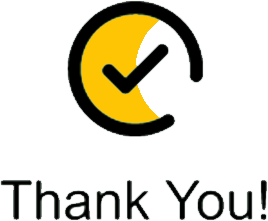Based on an article by Scott Young from the website RirianProject.com
Introduction by Dr. Don Rose, Writer, Life Alert
--
Below are seven savvy techniques for assimilating new knowledge – including, in the last step, maximizing memory. You might just learn something. --Don Rose
--
How you learn has a big impact on your life. Unfortunately, most people have ineffective strategies for learning, or strategies that don’t achieve optimal results. This article provides a few tips on how to maximize the amount you learn, so you can access and use more of it later.
1. Learn Holistically
The article How to Ace Your Finals Without Studying detailed a process dubbed “holistic learning.” Learning holistically is basically the opposite of rote memorization. Although most people usually sit somewhere between the extremes of holistic learning and memorization, particularly smart people who learn effortlessly tend to sit far closer to the holistic learning spectrum.
Holistic learning means relating everything you learn to things you already know. This creates an interrelated web of information. Trying to memorize everything is risky and prone to error; if your memory fails you, that information is unreachable. However, by interlinking your web of knowledge, if one route becomes blocked another is accessible.
2. Visualize It
You need to make the information you learn visceral. This means taking the ideas you learn and translating them to your senses. As a predominantly visual learner, you might translate complicated ideas into pictures in your head. If you think you are an auditory or kinesthetic (touch) learner, then you can translate ideas into those senses instead.
Imagine taking a course on vector geometry which involves subspaces. Although a subspace is a clear mathematical concept, one may initially have difficulty grasping it. By translating the abstract idea of a subspace into a visualization of a flat grid going through three dimensions, one now has a model to utilize for solving problems. Your visualization won’t be a perfect representation but a simplified model you use as a basis for solving problems.
3. Diagram It
If you have difficulty translating an idea to your senses, take out a pad of paper and try to draw out how the ideas fit together. When learning a subject, you can create a picture which links together all the different concepts you need to know and draw a diagram for how they all relate to each other. Diagrams help immensely in interlinking information and can often spur mental images, sounds or feelings to help describe it.
4. Metaphor It
Another way to interlink ideas holistically and form mental pictures is to use a metaphor. For example, when reading Machiavelli’s The Prince, one can use metaphors to link his ideas about statecraft to ideas about social and business settings. A good way to know whether you are using metaphors is to see if you are using words “like” or “as” when comparing two things. Programming languages are often built with these metaphors, with abstract constructs being described as child, orphan, inheriting or pointing to.
5. Test It
You can test your knowledge by using it to solve problems. Information you’ve learned but haven’t used is like disorganized iron filings on a table. Placing a magnet will align these filings to the magnetic field and form an interesting pattern of lines. Similarly, information you actually use gets sorted and organized in a way so that solving future problems becomes easier.
The best way to solve problems isn’t to continually solve the same problem, but to solve new challenges in different ways. Each run-through of a problem will organize your knowledge a bit more, but running wildly different problems on it improves your creative problem solving skills and gives you the ability to solve complex problems in multiple ways. If you want to really understand computer programming, don’t just solve problems, try to solve problems in different ways and tackle problems you’ve never faced before.
6. Teach It
Teaching your knowledge to someone else is about the best way to learn it yourself. The reason teaching works: it forces you to think holistically. While you may have memorized ideas inside your head, teaching someone forces you to relate the ideas with different metaphors and images.
If you really want to learn something, here is a suggestion: start a blog and write about the things you’ve learned. Whether you are studying courses or just trying to master a discipline, writing down what you know and trying to teach it to others will dramatically increase your own understanding. Writing a blog is like virtual teaching, and fun to boot; another bonus you get is improved writing ability.
7. When in Doubt, Link or Peg It
There will always be material that you simply have to memorize. When this happens, spending a bit of time to master link and peg systems for storing information can be invaluable. Dates, lists of information, specific rules or arbitrary ideas can all be stored with a link and peg system. Check out more about linking and pegging here.
About Scott Young
Scott is a PBN blogger who writes about learning, goals, productivity and getting the most out of life. You can check out his blog here or read some of his other articles: Habitual Mastery (how to change habits), Double Your Reading Rate, How to Ace Your Finals Without Studying or Energy Management.
The article above is covered by a Creative Commons Attribution 2.5 License. The information provided is, to the best of our knowledge, reliable and accurate. However, while Life Alert always strives to provide true, precise and consistent information, we cannot guarantee 100 percent accuracy. Readers are encouraged to review the original article, and use any resource links provided to gather more information before drawing conclusions and making decisions.
Dr. Don Rose writes books, papers and articles on computers, the Internet, AI, science and technology, and issues related to seniors.
For more information about Life Alert and its many services and benefits for seniors nationwide, please visit the following websites:
http://www.lifealert.com
http://www.seniorprotection.com
http://www.911seniors.com/






